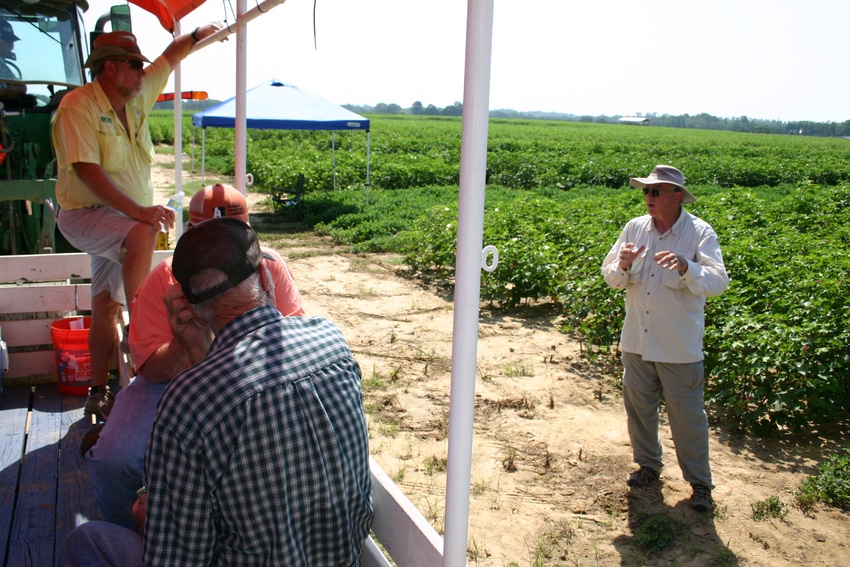September 9, 2014

Auburn University Extension Entomologist Ron Smith cautioned growers during the recent Wiregrass Field Crops Day not to let down their guard on stink bugs in cotton.
“Whenever a crop is mature and they can’t feed on a seed such as corn in the spring or cotton, they’ll move to another crop or to a younger field,” say Smith during the field day held in Headland, Ala. “Stink bugs will be moving shortly to later-maturing cotton or soybeans, and that’s where the majority of the population will end up later. So just make sure you watch your cotton until the top bolls that you want to harvest are 25 days old.”
Smith is conducting a trial at Headland where he’s planting eight rows of peanuts and eight rows of cotton to hopefully obtain a good sampling of stink bugs.
“We’re focusing this year on the selection of chemistry and the timing. We realize from past research that stink bugs are a big problem on cotton in weeks three through about six or seven of bloom. That is when most of the bolls are being produced that you will harvest,” he says.
There’s a window in there, at about week five, when you have the peak number of bolls that are exposed to or at risk to stink bug injury, says Smith.
“There are growers who, for one reason or another, are not interested in using the “Cadillac” of treatments, which is Bidrin. A lot of times, if we have a bad stink bug year, we’ll make a treatment at week three, week five and week seven. I’m trying to prove that if you’re going to use other products, use them at week three or week seven. Use your best product – Bidrin – at week five, which is the critical week when the most bolls are at risk.”
This year, he says, stink bug numbers are very low in the Wiregrass plot and in other parts of the state. “We’ll look at this next year and explore different sequences of materials and different timings.”
If you’re growing cotton this year, you know already that a lot of cotton has already matured out, says Smith.
“A stink bug will damage a cotton boll until it’s about 25 days old, when it’s still relatively hard. We have to maintain stink bug control until the top bolls we expect to harvest are about 25 days old. What we need to remember is that late-planted cotton or irrigated cotton is going to be green for awhile and continue to put on more fruit. We’ve got to be very observant for stink bugs until the end of October, or until the top bolls are mature.”
About the Author(s)
You May Also Like




